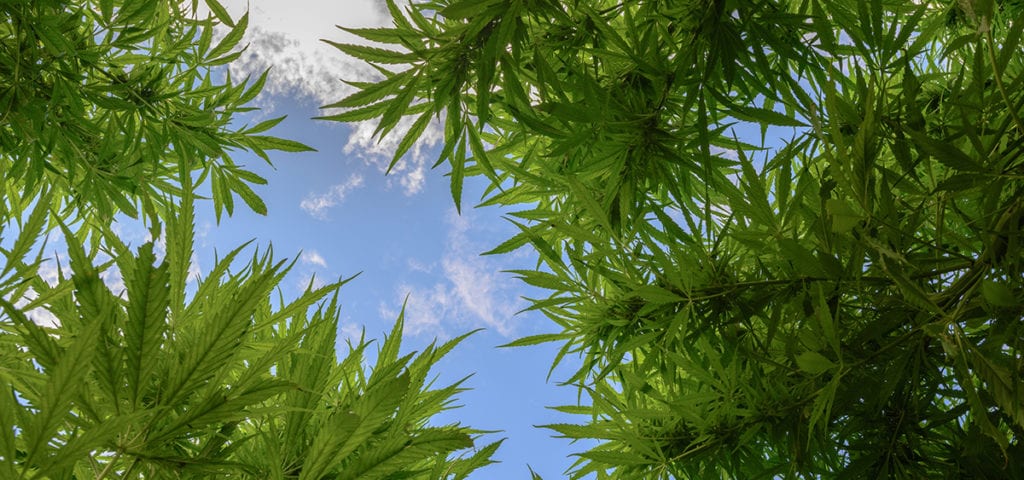California’s legal outdoor cannabis farms use about the same amount of water as other crops and may not use as much water as previously thought, a new study suggests.
Study: Cannabis Farms Use Less Water Than Previously Thought

Full story continued below.
Advertisement
A new study suggests that California’s outdoor cannabis farms may not use as much water as previously thought and significantly less than almonds—the state’s top agricultural commodity, according to a Times-Standard report outlining the research.
Van Butsic and Ted Grantham, co-authors of the study, co-directors of the Cannabis Research Center and adjunct fellows at the Public Policy Institute of California’s Water Policy Center, told the Times-Standard that their research “hasn’t found cannabis to be particularly thirsty relative to other crops.”
“Legal outdoor production uses about the same amount of water as a crop like tomatoes,” Bustic explained to the Times-Standard.
Natalynne DeLapp, executive director of the Humboldt County Growers Alliance, said the study results coincided with what the organization has seen on the ground, noting that “a single large almond farm in the Central Valley utilizes 33 times more water than all permitted Humboldt cannabis farms combined.”
“Another way to look at thirstiness is to consider how much output is produced by a single gallon of water. For other crops like tomatoes, lettuce or almonds, a gallon of water produces between a tenth of a cent to two cents of value in yield. For cannabis, a gallon of water produces nearly $7 worth of value. In that sense, cannabis is by far the most water-efficient agricultural product in California.”—DeLapp to the Times-Standard
The researchers do note that “more data is needed on cultivation practices to quantify water demands of cannabis farms, especially those that remain unpermitted.”
“Researchers should continue to explore the geographical, climatic, and farm-specific factors that influence water extraction and use to inform development of regulations that are environmentally protective, yet bolster participation in the regulated industry,” the researchers at the University of California Berkley Cannabis Research Center concluded.
Bustic said the researchers identified nearly 8,000 legal cannabis farms in California—both indoor and outdoor—compared to 15,000 unlicensed farms in Humboldt and Mendocino counties alone in 2018. The study authors note that illegal farms consume more water and are usually located in remote areas that support sensitive species, while legal farms rely more on groundwater wells to meet their demand.
Get daily news insights in your inbox. Subscribe
End